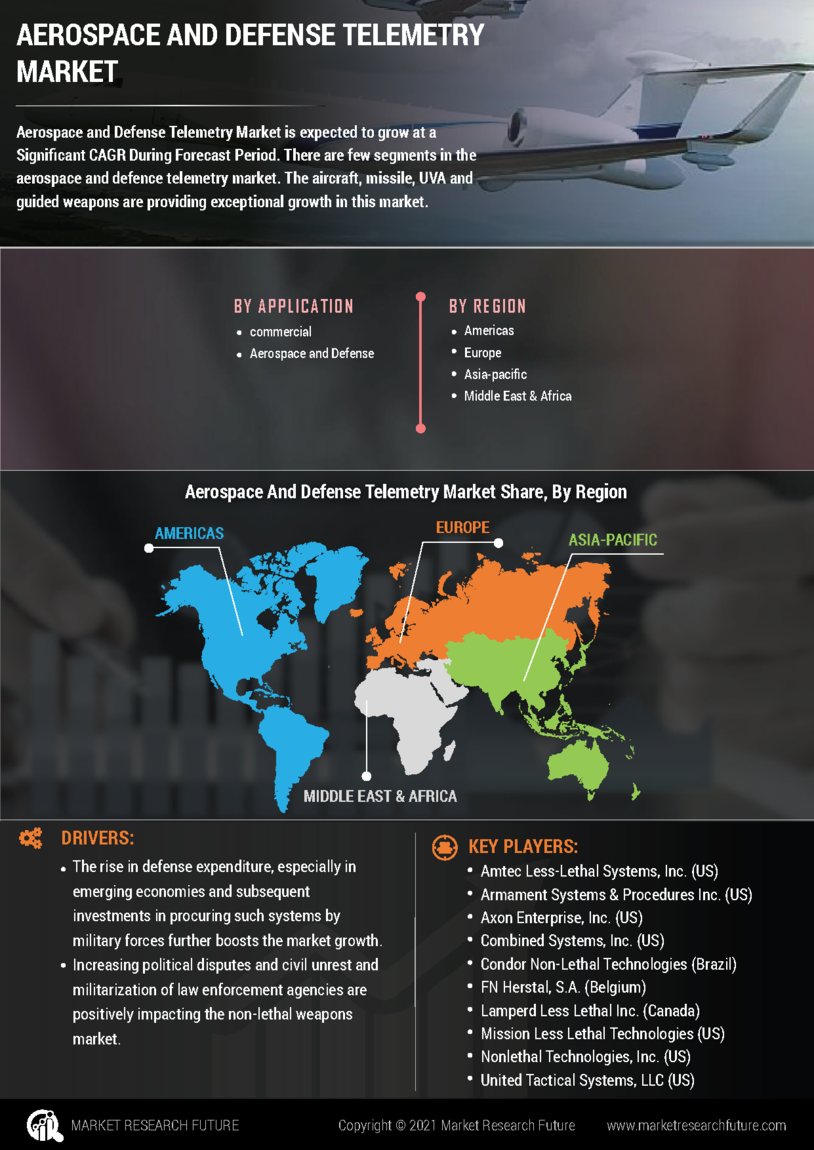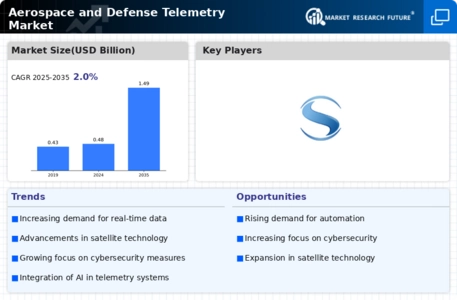Market Growth Projections
The Global Aerospace and Defense Telemetry Market Industry is poised for substantial growth in the coming years, with projections indicating a market value of 0.48 USD Billion in 2024 and an anticipated increase to 1.49 USD Billion by 2035. This growth trajectory suggests a compound annual growth rate of 10.82% from 2025 to 2035, reflecting the increasing reliance on telemetry systems in both military and civilian aerospace applications. The market dynamics are influenced by various factors, including technological advancements, rising defense budgets, and the expansion of space exploration initiatives. As these trends continue to evolve, the telemetry market is likely to witness significant developments.
Growing Focus on National Security
The Global Aerospace and Defense Telemetry Market Industry is significantly influenced by the growing focus on national security across various nations. Heightened geopolitical tensions and the need for robust defense mechanisms have led governments to prioritize investments in defense technologies, including telemetry systems. Countries are increasingly recognizing the importance of real-time data for decision-making in defense operations. For instance, nations in the Asia-Pacific region are ramping up their defense budgets, which includes funding for telemetry systems that enhance surveillance and reconnaissance capabilities. This trend is expected to propel the market towards a projected value of 1.49 USD Billion by 2035.
Emerging Markets and Defense Spending
Emerging markets are becoming increasingly significant in the Global Aerospace and Defense Telemetry Market Industry, as countries in regions such as Asia, Africa, and Latin America ramp up their defense spending. These nations are recognizing the necessity of modernizing their military capabilities, which includes investing in telemetry systems for improved operational effectiveness. For instance, countries like India and Brazil are enhancing their defense budgets to incorporate advanced telemetry technologies. This trend not only supports local industries but also attracts foreign investments, further stimulating market growth. The increasing defense spending in these emerging markets is expected to have a lasting impact on the telemetry sector.
Expansion of Space Exploration Programs
The expansion of space exploration programs is a notable driver of the Global Aerospace and Defense Telemetry Market Industry. As countries and private entities invest in space missions, the demand for telemetry systems that can monitor and transmit data from spacecraft is rising. Telemetry plays a crucial role in ensuring the safety and success of space missions by providing critical information about vehicle performance and environmental conditions. For example, NASA's Artemis program aims to return humans to the Moon, necessitating advanced telemetry solutions for mission success. This growing sector is likely to contribute to the overall market growth, reflecting the increasing importance of telemetry in aerospace applications.
Increasing Demand for Advanced Military Systems
The Global Aerospace and Defense Telemetry Market Industry experiences a surge in demand for advanced military systems, driven by the need for enhanced situational awareness and operational efficiency. Governments worldwide are investing heavily in modernizing their defense capabilities, which includes the integration of telemetry systems for real-time data transmission and analysis. For instance, the United States Department of Defense has allocated substantial budgets for research and development in telemetry technologies, which are crucial for the effective operation of unmanned aerial vehicles and missile systems. This trend is expected to contribute significantly to the market's growth, with projections indicating a market value of 0.48 USD Billion in 2024.
Technological Advancements in Telemetry Systems
Technological advancements play a pivotal role in shaping the Global Aerospace and Defense Telemetry Market Industry. Innovations such as miniaturization of sensors, improved data processing capabilities, and enhanced communication protocols are transforming telemetry systems. These advancements enable more efficient data collection and transmission, which is vital for both military and civilian applications. For example, the development of advanced satellite telemetry systems allows for better tracking and monitoring of aerospace vehicles. As these technologies continue to evolve, they are likely to drive market growth, with an anticipated compound annual growth rate of 10.82% from 2025 to 2035.











